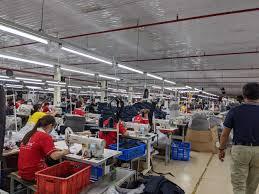Artistic Garment Facilities: Delivering Quality at Scale

Setting the Stage: Karachi’s Textile Transformation
Karachi’s industrial landscape has seen transformation over recent years, and artistic garment facilities have played a pivotal role. These sites are not just production floors—they represent a new era in manufacturing where efficiency, sustainability, and quality intersect. Operated by Artistic Milliners, these sophisticated garment units have redefined what Pakistan’s textile capacity can achieve, meeting the demands of global fashion brands with precision and purpose.
Defining the Artistic Garment Infrastructure
When people refer to artistic garment facilities, they’re talking about high-tech manufacturing units such as Unit AM‑4 and its peers in the Korangi Apparel Park. These facilities include cutting, sewing, finishing, and quality assurance zones, all designed to meet international standards. In total, the facility expansion boosted production capacity by 30 percent—translating to around 43 million garments annually.
Leading with Industry 4.0 Principles
Efficiency and scale are hallmarks of artistic garment sites, where digitized workflows, real-time tracking tools, and automated wage systems are standard. These smart systems allow for error reduction and higher throughput without compromising quality. This digital transformation aligns closely with Industry 4.0 principles and global apparel manufacturing demands.
Sustainability Woven Into Every Process
Sustainability isn’t an add-on—it’s embedded in artistic garment operations. Unit AM‑4, for example, is LEED Platinum certified and boasts solar panels generating 850 kW energy along with membrane bioreactor (MBR) water recycling systems. These features support eco-conscious manufacturing and substantial resource savings.
Empowerment Through Workforce Diversity
A standout feature of artistic garment units is their inclusive staffing model. Approximately 70 percent of the workforce are women, half of them in middle-management roles—especially in traditionally male-dominated areas like dry processing. This gender-balanced structure supports both social progress and operational excellence.
Scaling Without Sacrificing Precision
Despite large daily garment outputs, artistic garment units maintain tight control over quality. They accomplish this by balancing high-volume production with smaller, precise sample runs in adjacent units. This ensures that each batch reflects consistent standards before entering bulk manufacturing.
Comprehensive Quality Assurance Protocols
Quality is non-negotiable in artistic garment facilities. Every shipment undergoes shade matching, shrinkage testing, and durability trials. These checks are backed by lab certifications and tracking systems trusted by international brands, enabling repeatability and traceability across millions of garments.
Training Integrated in Production Culture
Within artistic garment sites, training hubs are embedded directly in production spaces. This ensures all employees—whether operators or quality auditors—receive consistent protocol training. The result is a unified approach to workmanship across all manufacturing units.
Piloting Innovations Before Full Rollout
Advanced processes—like ozone finishing or fiber recycling—are initially tested in controlled micro-environments within artistic garment facilities. Only after robust validation are these adopted at scale in larger plants, minimizing disruption and enhancing sustainability.
Certifications That Speak Volumes
In addition to garment-specific LEED accreditation, artistic garment units comply with certifications linked to chemical safety, water use reduction, and indoor environmental quality. These credentials deepen the trust global buyers place in these factories.
Digitally Enabled Supply Chain Transparency
Digitization supports transparency in artistic garment operations. Real-time data on orders, inventory tracking, and production stages help brands monitor and optimize their lines—a feature that sets these units apart from conventional factories.
Prioritizing Worker Safety and Comfort
These are not typical factories. In artistic garment facilities, ergonomic layouts, emergency management systems, and fire safety protocols ensure occupational health is prioritized. This enhances morale and productivity, making the workplace safer for all.
Integrating Circularity Into Apparel Manufacturing
Artistic garment operations support broader ESG commitments—like fiber traceability and circular textile models—by integrating recycled materials and compliance reporting into the workflow. These processes help global brands meet environmental benchmarks.
Offering Scale and Flexibility for Global Brands
Whether it's a large-scale retail brand or a fast-growing label, artistic garment facilities offer production flexibility. They manage bulk runs while also accommodating smaller, customized orders—all under strict quality and sustainability protocols.
Empowering Local Talent Through Skill Development
These units aren’t only about output—they invest in training Karachi’s workforce in modern garment technologies and quality standards. This raises local skill levels and supports broader industrial growth.
Aligning Corporate Vision with Industry Leadership
Artistic garment units reflect Artistic Milliners’ mission to lead through innovation, sustainability, and social responsibility. They are not just production floors but embodiments of a brand committed to responsible manufacturing.
Meeting Global Sourcing Requirements
Major brands sourcing from these facilities benefit from accurate shade control, labor compliance, safety documentation, and environmental reporting—ensuring their supply meets international retail standards.
Harmonizing Technology with Human Expertise
Automation is key—but artistic garment units also maintain critical manual roles led by trained female workers, blending technology with human craftsmanship. This hybrid approach ensures both precision and personalization.
Built for Resilience and Operational Continuity
Multiple interconnected artistic garment units offer redundancy. If one site faces disruptions, others can absorb part of the workflow—ensuring delivery timelines remain intact even under pressure.
Sustainability Returns Beyond Compliance
Investments in renewable energy, waste recovery, and green infrastructure reduce long-term costs and environmental impact—making artistic garment units a smart choice for eco-conscious brands and investors.
Final Thoughts: A New Benchmark in Apparel Production
In Karachi, Artistic Milliner's garment facilities have reset expectations for garment manufacturing: global scale, robust quality, inclusive culture, and real sustainability. Whether you're a textile executive or a curious reader, these operations represent a compelling model of what modern apparel production can be.
- AI
- Vitamins
- Health
- Admin/office jobs
- News
- Art
- Causes
- Crafts
- Dance
- Drinks
- Film
- Fitness
- Food
- Jocuri
- Gardening
- Health
- Home
- Literature
- Music
- Networking
- Alte
- Party
- Religion
- Shopping
- Sports
- Theater
- Wellness


